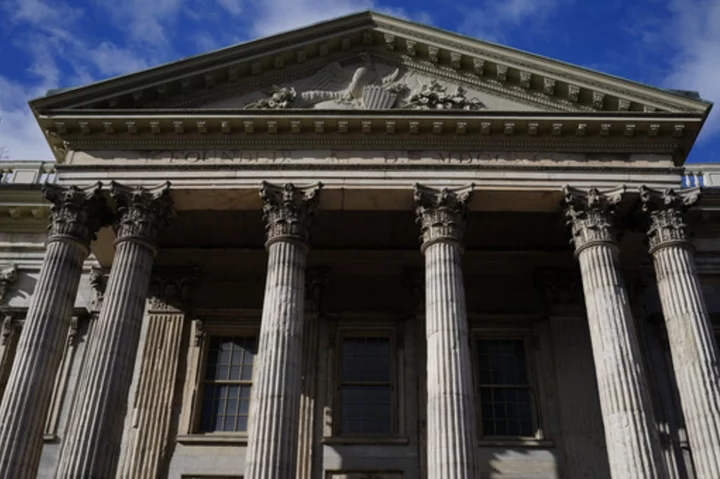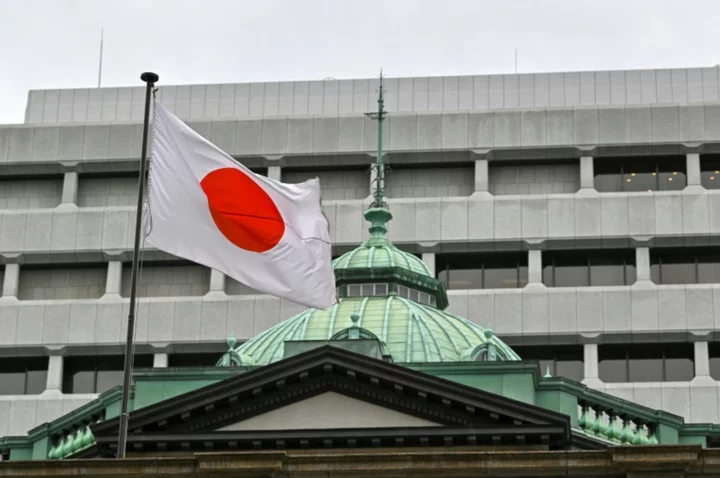PHILADELPHIA (AP) — The landmark First Bank of the United States in Philadelphia, subject of a fierce debate in the early years of the American republic, will be getting a $22.2 million renovation as part of a planned transformation into a museum focusing on the institution's role in the development of the U.S. economy.
Closed to the public for decades but a popular site for photos because of its neoclassical facade featuring six giant columns supporting a triangular pediment, the building in Philadelphia's Old City was constructed between 1795 and 1797 and was the first structure designed specifically for the new federal government in what was then the nation’s capital.
After years of calls for its restoration, the building will open as a museum in time for the celebration of the 250th anniversary of the Declaration of Independence in 2026.
“We tell the story of the Declaration of Independence, the Constitution, the Revolutionary War,” executive director Thomas Caramanico of the Independence Historical Trust said Monday, pointing to nearby institutions while standing on the bank's steps, WHYY-TV reported. “But we don’t tell the story of money.”
Park officials say the newly formed United States had massive debt and dozens of local currencies as President George Washington took office in 1789. Alexander Hamilton, then secretary of the treasury, advocated a national bank to give the federal government more authority to handle the fiscal situation. Future president Thomas Jefferson, then secretary of state, argued that the U.S. Constitution didn't authorize creation of a national bank and urged a veto by Washington. But Hamilton prevailed and The Bank of the United States, now called the First Bank, was given a 20-year charter.
The bank didn't dictate federal policy but wielded great influence due to its size, and banknotes it issued were the closest thing to a national currency — and the only thing accepted to pay the federal taxes it was charged with collecting. The bank also worked to pay the national government's bills, including a lot of debt left over from the Revolutionary War. Congress decided not to renew the bank's charter when it expired in 1811, and five years later — after the War of 1812 — President James Madison signed a bill establishing the Second Bank of the United States.
The $22.2 million work beginning this month will include roof repairs, cleaning and repair of marble and brick masonry, and interior repair and renovations as well as construction of a new addition to serve as the main visitor entrance. The Independence Historical Trust, the park’s philanthropic partner, has raised $4.5 million for essential architectural and construction documents and for the design, fabrication and installation of interactive and immersive exhibits. Officials said an additional $6.6 million will be sought to complete the project.
Exhibits in the planned First Bank museum “will describe Hamilton’s vision of a national economy by exploring key aspects of the nation’s commerce, workforce, natural resources, and financial systems,” officials said. A public-private campaign is to pay for "video walls, state-of-the-art interactives, and immersive environments that will engage visitors in first-person narratives and illustrate the impact of the First Bank in transforming America’s economy."









